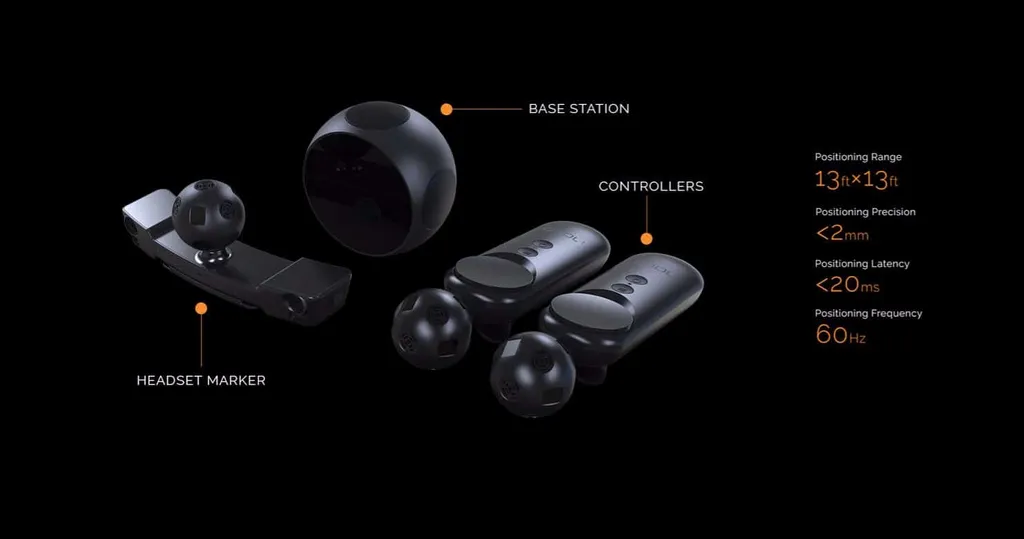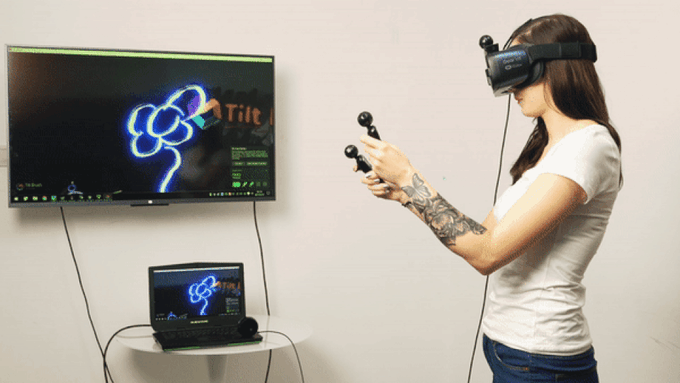There’s no getting around that fact that the $799 price tag on the HTC Vive and cost of a high-end computer makes it difficult for many people to get into high-end VR. NOLO VR wants to change that with the help of your smartphone.
Similar to solutions from Ximmerse and others, Chinese company LYRobotix’s set of sensors and controllers that make up this new offering promise to enable Roomscale VR on mobile phones. NOLO, which you could theoretically use with a phone you already have and an inexpensive mobile headset, claims to be fully compatible with SteamVR. This mean you would have access to Vive’s entire content library, at least according the creators of this project.
NOLO consists of two position tracked remote-like controllers, a singular base station, and a headset marker placed on top of any smartphone-holding VR device. The marker can fit most mobile headsets, including Gear VR, Google Daydream and Cardboard. The base station is said to feature a 100 degree field of view.
The setup is said to be compatible with Android phones right now, with plans to integrate iOS later. The solution isn’t just for SteamVR, though, as it can also be used with native mobile VR games that are developed with the setup in mind, and LYRobotix says it is preparing an SDK that’s compatible with both Unreal and Unity Engines.
The mere promise for the kit alone has been enough to sell a lot of VR fans: NOLO has a fully funded Kickstarter campaign just one day after launching. The company had asked for $50,000 but, at the time of writing, has raised nearly $75,000 and still has well over 30 days to go. The campaign is offering early bird sets for $99, with limited quantities left.
It almost sounds too good to be true, and it might be. We haven’t seen this for ourselves and the wireless setup requires streaming from a PC over the Riftcat and VRidge apps, which display VR content on your phone but also come with the usual concerns about latency, which LYRobotix claims to keep under 20 milliseconds. If streaming to a smartphone gives you even more than a few milliseconds of delay between turning your head and the image catching up, it may be unplayable for many. There’s also only one base station included, so we wonder if occlusion could become an issue.
Still, we haven’t gone hands-on with the device ourselves, so we really can’t say whether or not it works at this point.
LYRobotix plans to ship the kit in May of this year.





























